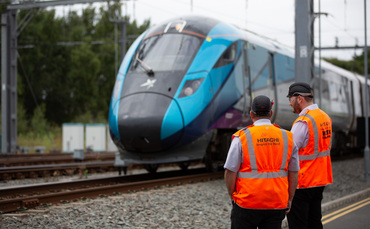Did the UK not electrify their rail network??
As of October 2023, 6,065 kilometres (3,769 mi) (38%) of the British rail network was electrified.
More than half is still old school
That’s… surprising. Here in Japan, over 26,000 km of the 30,000 some-odd km of track is electrified. Most of the fueled trains are for freight, which only accounts for less than 1% of rail traffic.
What prevented the UK from deploying electrification to that extent? Is it politics or logistics?
Politics. They privatized rail and the private companies don’t like doing the investment.
Network Rail (who own and maintain the track/infrastructure) are state run.
It was privatised for about 5 years, it was a disaster, and it was brought back in house.
Trains are run by TOCs, though these are being gradually coming back to the state too.The honest answer is, we have a fuckton of track, much of which has been there since victorian times.
Couple that with diesel-electric trains that run at 125mph already, a lot of track that doesn’t get that much use, and the electrification number is low.We’re slowly getting there.
New lines are electric from the start, and electrification projects are rolling out.
It can be a pain in the ass though (GWML, for example. We had to order bi-mode trains to continue down to the westcountry, and while the electric part was completed.)Plus the issue that any track that’s busy enough to prioritise electrification on is going to be more complex because of the impact any downtime causes on a busy route.
Yeah and all this is important because it means things won’t get automatically better as the nationalization goes ahead.
Maybe the promised planning reforms will help, but anything where you have to modify a bridge or a tunnel in a city to make room for electrification is always going to be a pain.
So are battery trains expensive in the long run and have worse performance, and only being used because they’re immediately cheaper than electrifying more rail?
Pretty much, yeah. I also believe this is due to the infrastructure being run by different companies than the ones running the trains on them, so there’s no incentive to invest in electrification.
Thanks for the numbers! I knew it was bad, but I didn’t know it was that bad…
Yeah, this is the real question
Most of the UK network is electrified with a third rail. Some is overhead, but significant parts are not electrified at all.
Bits of it are. Entirely depends where you are.
Cool, but come on, put some over head wires up!
I wonder if overhead wires make sense with the state of battery technology now? It must be cheaper to build battery-powered trains than install and maintain all that infra before you even factor in the cost of adjusting bridges and tunnels to accommodate the overhead wires.
Unlikely. Batteries are still incredibly expensive, also heavy and a consumable item (need to be regularly replaced). Overhead wires don’t work for 1 train, but for all of them. They are also a mostly permanent installation with comparatively cheap maintenance (they are just steel+paint for the most part).
It’s surely fine for a fringe route, where a train or two runs, and that would need electrification for a lot of track. So I’d assume there’s a break even point somewhere.
What are you talking about?
Batteries have planety of drawbacks compared to overhead wires.
- Weight - Batteries way a LOT, meaning that locomotives need to be stronger, meaning they will be heavier, meaning that need stronger bridges and sturdier tracks.
- Lifetime - Batteries are consumed as they are used and recharged, they are also not as easy/cheap to replace as pantographs.
- Range - Batteries has limited range, normal electric trains have unlimited range.
- Charge time - Batteries need charging, normal electric trains does not.
Normal electric trains are technically the ideal transportation, you have unlimited range and don’t need to carry the fuel.
Don’t forget acceleration, one of the main reasons passenger trains care about weight is that you can get up to and down from line speed quicker, thusly saving trip time and allowing for more frequency/capacity from the same number of trains and drivers.
The extra weight from the batteries means you don’t get said benefits from going to battery electric as compared to overhead line.
“By using this cutting edge technology, we anticipate to achieve significant efficiency gains from the process whereby we extract waste cash from our customers’ wallets and convert it into useful revenue such as dividends and CEO bonuses.”
Except that all the UK trainlines are being nationalized.
Yeh… but its still run for profit by corrupt government officials. The current budget for hs2 (which iirc has still laid less than 30 miles of track) is more than the projected cost of the entire combined EU rail connection an revitalization scheme. (60 billion vs 40 billion last I checked)
If only there was some way of having all these benefits without having to haul heavy batteries around…
slashes fuel costs by up to 50 per cent
And the cost of the battery will be recovered in… How many years?
Paywall…
Still doesn’t work lol.
no it sure doesn’t, I apologize for my somewhat condescending tone
I tried a few paywall breakers but none of them work.
For that site, think unless you’re subscribed, that url is just that page with the “continue reading” as part of the html with the rest of the article not actually there.
subscribers would have a different url with the entire article. its not javascript based paywall, which 12ft.io is quite adept at passing up, generally, so I assumed it’d work.
this is why we dont assume!!
It’s alright. Yeah sites have caught up with tools like 12ft these days.
booooooooooooo









